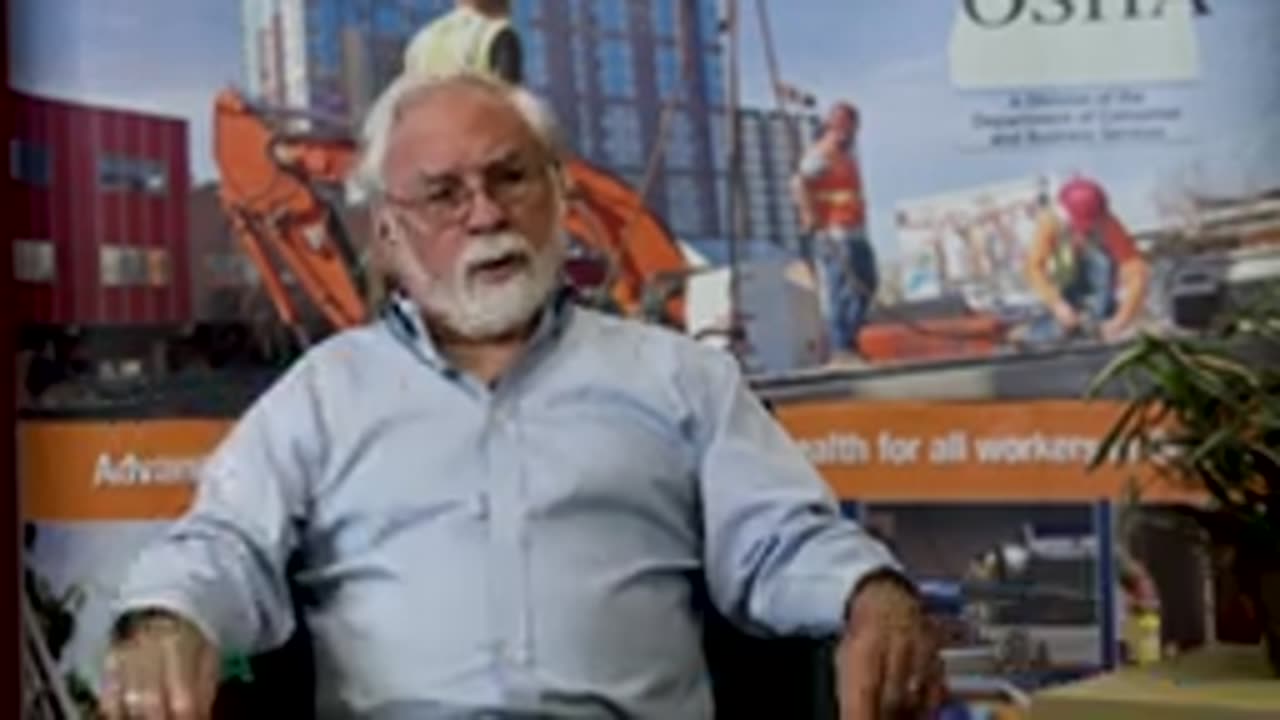Premium Only Content

Trigger Heights in Fall Protection _ Construction, Oil, Gas, Lumber, Machine Shops, General Industry
### **Trigger Heights in Fall Protection: A Critical Safety Measure Across Various Industries**
**Introduction:**
Falls are one of the leading causes of injuries and fatalities in the workplace, particularly in high-risk industries such as construction, oil, gas, lumber, machine shops, and general industry. The concept of **trigger heights** in fall protection plays a crucial role in minimizing fall-related accidents. Trigger heights are defined as the minimum height at which fall protection measures must be implemented, ensuring workers are safe when working at elevated levels. Understanding and adhering to these trigger heights are vital for both employers and employees to prevent tragic accidents.
---
### **What Are Trigger Heights?**
**Trigger heights** refer to specific elevations at which fall protection equipment must be used to protect workers. These thresholds are established by safety organizations like **OSHA** and are tailored to the type of work being performed and the environment in which it occurs. When workers are exposed to potential falls from heights above these designated thresholds, the appropriate **fall protection systems** (e.g., **harnesses**, **guardrails**, **safety nets**, etc.) must be in place to prevent accidents.
---
### **Industry-Specific Trigger Heights:**
#### **1. Construction Industry**
In construction, fall protection is especially critical due to the high risk of workers performing tasks on scaffolds, roofs, ladders, and other elevated platforms.
- **OSHA Standards for Construction:**
- **General Rule**: In general construction, fall protection is required when workers are exposed to falls of **6 feet or more** above lower levels.
- **Roofing Work**: For roofing activities, fall protection is required when working at heights of **6 feet** or more.
- **Steel Erection**: Workers who are exposed to falls during steel erection must have fall protection when working at heights of **15 feet or more**.
**Common Fall Protection Measures**:
- **Guardrails**
- **Personal Fall Arrest Systems (PFAS)**
- **Safety Nets**
#### **2. Oil and Gas Industry**
Oil and gas work involves significant risk, particularly when working on offshore rigs or in deep excavation sites, where workers may be exposed to significant fall hazards.
- **Trigger Height**: In the oil and gas industry, fall protection is required when workers are exposed to falls of **6 feet or more**.
- Offshore workers on oil rigs may have additional hazards, such as falling into the water, so specialized fall protection equipment, including **lifelines** and **harnesses**, is essential.
**Common Fall Protection Measures**:
- **Safety Harnesses and Lanyards**
- **Netting Systems**
- **Scaffolding and Guardrails**
#### **3. Lumber and Forestry Industry**
Working in the lumber and forestry industry involves unique fall risks, including working from heights on trees, equipment platforms, and various scaffolding structures in forests or sawmills.
- **Trigger Height**: For workers in lumber mills or logging operations, fall protection is required at heights of **6 feet or more** or any height where a worker is exposed to a hazard.
- The dangerous nature of working at these heights often requires **personal fall arrest systems** and **guardrails** on scaffolding and machinery.
**Common Fall Protection Measures**:
- **Harnesses and Fall Arrest Systems**
- **Scaffold Systems**
- **Ladders with Proper Fall Protection**
#### **4. Machine Shops and Manufacturing Industry**
In machine shops and manufacturing plants, workers are often required to work on elevated platforms, around large machinery, and in environments where exposure to falls is common.
- **Trigger Height**: Fall protection is typically required for heights of **4 feet or more** when working near dangerous machinery, equipment, or other potential fall hazards.
- This threshold is slightly lower due to the presence of heavy machinery that could cause serious injuries or fatalities if a worker falls.
**Common Fall Protection Measures**:
- **Fall Restraint Systems**
- **Guardrails**
- **Scaffoldings and Safety Netting**
#### **5. General Industry**
General industry encompasses a broad range of workplaces, including warehouses, factories, and distribution centers, where fall hazards may arise from elevated platforms, mezzanines, or working near open holes or edges.
- **Trigger Height**: In general industry settings, fall protection is required for falls from heights of **4 feet** or more.
- This lower threshold reflects the wide range of fall risks in industries where workers may be exposed to machinery, platforms, and other elevated surfaces.
**Common Fall Protection Measures**:
- **Guardrails**
- **Ladder Safety Systems**
- **Personal Fall Arrest Systems**
---
### **The Importance of Trigger Heights in Fall Protection**
1. **Preventing Serious Injuries or Deaths**:
- Falls are the leading cause of fatal injuries in the workplace. Setting clear and enforceable trigger heights ensures that fall protection is used consistently, reducing the likelihood of injuries and fatalities from falls.
2. **Compliance with OSHA Regulations**:
- OSHA’s standards for fall protection in construction, general industry, and other sectors are based on trigger heights. Employers must comply with these regulations to avoid fines, legal repercussions, and, most importantly, to safeguard their workers.
3. **Promoting Worker Confidence**:
- Workers who know that their employer adheres to safety standards and provides fall protection systems are more likely to feel safe and confident in their work environment, leading to better performance and fewer accidents.
4. **Improved Safety Culture**:
- When employers ensure fall protection is in place at the right heights, it fosters a culture of safety within the workplace. Employees understand that their well-being is a priority and that safety measures are non-negotiable.
---
### **Key Fall Protection Measures for Trigger Heights:**
1. **Personal Fall Arrest Systems (PFAS)**:
- PFAS includes harnesses, lanyards, and lifelines. These systems are designed to stop a fall in progress, minimizing injury to the worker.
2. **Guardrails and Handrails**:
- These are physical barriers placed around open edges, scaffolding, or other elevated surfaces to prevent falls.
3. **Safety Nets**:
- Used in areas where guardrails cannot be installed, safety nets catch workers who fall from heights and prevent them from hitting the ground or machinery below.
4. **Scaffolding and Ladder Safety**:
- Scaffolding and ladders are often required when working at heights. These structures should be properly built and equipped with fall protection systems such as guardrails or personal fall arrest equipment.
5. **Training and Education**:
- Regular training on the proper use of fall protection systems and the importance of following OSHA regulations is essential to keeping workers safe.
---
### **Conclusion:**
Understanding and implementing **trigger heights** in fall protection is essential across various industries. By establishing clear height thresholds, employers can ensure that the appropriate fall protection systems are in place, reducing the risk of falls and keeping workers safe. OSHA regulations are designed to protect workers in industries such as construction, oil and gas, lumber, machine shops, and general industry, making fall protection a top priority for any employer.
Adherence to these safety measures not only prevents accidents but also fosters a culture of safety, promoting confidence among workers and ensuring compliance with industry standards. Proper training and fall protection systems are a fundamental part of workplace safety, and their implementation can save lives.
-
 1:30:23
1:30:23
Twins Pod
17 hours agoHe Went From MARCHING With BLM To Shaking Hands With TRUMP! | Twins Pod - Episode 45 - Amir Odom
141K31 -
 1:02:30
1:02:30
Exploring With Nug
19 hours ago $4.20 earned2 Duck Hunters Missing After Kayak Capsizes!
66.2K4 -
 46:48
46:48
Mally_Mouse
12 hours agoLet's Hang!! -- Opening Christmas gifts from YOU!
74.4K1 -
 44:55
44:55
Athlete & Artist Show
20 days ago $2.07 earnedNHL 4 Nations Snubs, Was Hawk Tuah Coin A Scam?
71.1K -
 33:47
33:47
Stephen Gardner
18 hours ago🔥Pentagon Whistleblower UNLEASHES on Biden and Obama!
127K283 -
 2:20:30
2:20:30
The Dilley Show
19 hours ago $28.77 earnedRoger Stone in Studio plus Q&A Friday! w/Author Brenden Dilley 12/27/2024
103K22 -
 1:57:02
1:57:02
The Charlie Kirk Show
17 hours agoThe Great H-1B Battle + AMA | Lomez | 12.27.24
190K297 -
 11:39
11:39
Russell Brand
1 day agoWhat You're Not Being Told About The Syrian War
185K300 -
 DVR
DVR
Bannons War Room
1 year agoWarRoom Live
101M -
 1:49:21
1:49:21
Film Threat
20 hours agoBEST AND WORST OF 2024 + SQUID GAME SEASON 2 | Film Threat Livecast
65.5K7